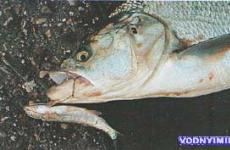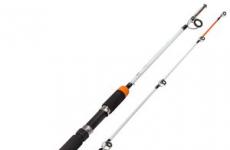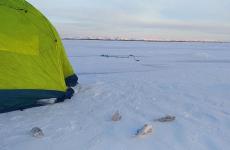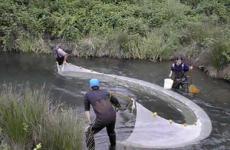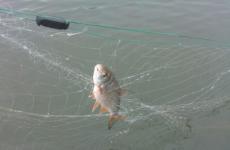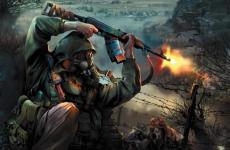Beautiful places in Kabardino-Balkaria. Sights of the Kabardino-Balkarian Republic Maiden Spit Waterfall






























The Elbrus Azau ski complex began its work in the mid-20th century. The first stage of the Elbrus cable car from the Azau station to the Krugozor station began operating in 1969, serving tourists from all over the world. Since then, the Elbrus Azau ski complex has been a special place for lovers of the mountain slopes.
The two peaks of the extinct volcano (western and eastern) are covered with snow and ice almost all year round, which allows skiing on some individual sections of the Elbrus slope all year round. The double-peaked giant Elbrus captivates its guests with wide slopes that are suitable for both skiers and snowboarders.
Mount Elbrus is the highest peak not only in Russia, but also in Europe. The western peak has a height of 5,642 m, the eastern one – 5621 m. The maximum lift height on cable cars is 3780 m (Gara-Bashi). And skiers confidently declare: “Elbrus is the largest ski mountain in the world.”
The Elbrus Azau ski complex originates in the Azau clearing, located at the foot of the majestic Elbrus. There are two cable car stations in the Azau clearing:
- "old" pendulum
- new gondola ride
Both cable cars run parallel to each other. There are 2 stages of both cable cars, the 3rd stage is under construction. There is also a single-chair cable car on the 3rd stage, but it does not always work. From the 2nd stage (Mir station) those wishing to go up on snowcats, the ascent time to “Priyut-11” is 20 minutes.
Cable cars Elbrus - Azau
| Queues | Type of road | Travel time (min) | Throughput, people. / hour | Height difference (m) | Track length (m) |
|---|---|---|---|---|---|
| Yoke in the Azau clearing 2300m-2500m | Yoke VL-400, “Mops” of the paddling pool in Azau | 5 minutes | 200 | 500 | |
| 1st stage Azau (2350m) - Stary Krugozor (3000m) | Pendulum cableway "Elbrus-1" | 12 min | 100 people / hour | 650 | 1740 |
Gondola cable car “POMA-1” | 5 minutes | 480 people/hour (design - 2400) | 580 | ||
| 2nd stage OldKrugozor (3000m) - World (3500m) | Pendulum cableway "Elbrus-2" | 12 min | 100 people / hour | 500 | 1800 |
Gondola cable car “POMA-2” | 5 min 12 sec | 480 people/hour (design - 2400) | 514 | ||
| 3rd stage Mir (3500m) - Gara-Bashi (3780m) | Chairlift "Elbrus", 1-seater | 12 min | 130 people /hour, on repair | 250 | 1500 |
Gondola cable car | 5 minutes | under construction | 374 |
Prices for Elbrus-Azau ski lifts
Elbrus ski slopes
Skiing on the slopes of the Elbrus Azau ski complex is much more comfortable than on Cheget. The ski area on the slopes of Elbrus is suitable for both beginners and experienced skiers.
Officially, the Elbrus Azau ski resort has 7 slopes with a total length of about 11 km. In reality, the Elbrus slope is one continuous track where skiers and boarders of all skill levels can ride. The length of the route from the “Bochki” shelter (Gara-Bashi station) to the Azau clearing is 6 km, from “Shelter-11” - 8-10 km, depending on the chosen descent option.
In general, the slopes of Elbrus are wide and gentle “blue” routes, with small elevation changes and short “red” sections. And although there are few nets and limiters, you should not go beyond the marked routes.
Scheme of slopes and lifts "Elbrus - Azau"
Will help you find your way around the ski resort. We tried to place the most significant objects on it. In addition, on this page you can see the coordinates Elbrus region on the map countries and get information about the largest tourist settlements.
National Park "Elbrus"
Elbrus National Park is located in the center of the large mountain range of the Caucasus Mountains, on the southern border of the Russian Federation in the Republic of Kabardino-Balkaria. This is the upper reaches of the Baksan Gorge. The Elbrus region includes several villages: Verkhniy Baksan, Neutrino, Elbrus, Tegenekli, Baidaevo, Terskol. The nearest city is Tyrnyauz, the administrative center Elbrus region.

The settlements were located along the road running along the bottom of the Baksan Gorge and leading to the foot of the highest mountain in Europe. Location Elbrus on the map can be quickly determined by switching to satellite. The white spot of eternally snowy peaks is clearly visible against the background of the green massif. Elbrus coordinates(western peak): latitude 43.2113, longitude 42.2630.
On Elbrus region map one more vertex is highlighted. This is Mount Cheget. It is located a little closer to the villages and has very interesting slopes for skiing. But the slopes here are so difficult that they are only suitable for professionals. That's why ski Elbrus does not lose its popularity. Its routes are longer and are served by a new cable car.
The main tourist infrastructure of the Elbrus region resort is concentrated in 3 settlements. These are villages Elbrus, Tegenekli And Terskol.
Elbrus village
Elbrus is a village located in Elbrus region Kabardino-Balkaria, on both banks of the Baksan River.
On Elbrus region map it is clear that a side gorge goes away from the village to the right. This is Irik-Chat, through which you can access Elbrus glaciers or go to the Djily-Su spring. The gorge is crowned by the Irik glacier, one of 23 Elbrus glaciers.
The side gorge Adyl-Su goes to the left - the most popular and beautiful in the Elbrus region. There are several mountaineering bases located nearby.
In the village itself there are cozy comfortable hotels (Peak of Europe, Grand Ozon, Ozon Landhaus, etc.), the Elbrus boarding house, the Andyrchi children's sanatorium, several cafes, and a hospital specializing in the treatment of the respiratory system.
Almost in the center Elbrus there is an office and scientific laboratories National Park "Elbrus". The famous Baksan pine forest begins from the village.

Tegenekli village
On the left bank of the Baksan River, between Elbrus villages(1.5 km) and Terskol(10 km) is located small Tegenekli village. It is located at an altitude of 1850 m above sea level. The Elbrus and Cheget ski lifts are 10-12 km away. from Tegenekli.
Here are the boarding houses “Edelweiss” and “Elbrus”, the recreation center “Baksan”, several cafes and bars, and a training slope with a rope tow.
also in Tegenekli village there is a mountaineering and hunting museum named after. V.V. Vysotsky. Here, in Tegenekli, the famous film “Vertical” was filmed.
In the late 1960s, Stanislav Govorukhin's film became a cult work on which an entire generation of Soviet people grew up. “Vertical” was the first Russian film about climbers.
One of the main roles in it was played by young Vladimir Vysotsky. The museum widely presents exhibits and materials about the history of the Elbrus region and the people inhabiting it.

Terskol village
The village of Terskol is a center of mountain tourism, mountaineering and skiing in the Elbrus region. It is located in the upper reaches of the Baksan Gorge, near Elbrus, 4 km. from the Azau clearing.
On Elbrus region map it is clear that this is the highest mountain village, located at an altitude of 2200 m above sea level.
IN Terskol
IN Terskol there are small private hotels (Esen, Balkaria, Vershina, Legend, Ozon Cheget, etc.), boarding houses (AnTau, Cheget, Wolfram, etc.), shops, cafes, snack bars, a children's ski school, post office, telegraph, control and rescue service.
Not far from the village there are the Elbrus (2 km) and Cheget (1 km) cable car complexes. The village is surrounded by a picturesque pine forest, and the Achi-Su mineral spring is located very close by.
The whole life of the village is permeated with alpine skiing, you can feel it even in summer. Posters, announcements, room furnishings - everything indicates that you are at the largest ski resort.

Gives a visual representation of the location of cable cars and ski slopes in the mountains Elbrus and Cheget. Complex " Elbrus"includes 3 stages of the old cable car (pendulum and chairlifts) and a new gondola-type cable car. The Cheget complex is represented by a cable car and a double chairlift.
On Elbrus region map The Museum of Military Glory of the Defenders of Elbrus and the Caucasian Passes during the Great Patriotic War of 1941-1945 is noted. It is located on the territory of the Mir station, at an altitude of 3500 m. This is the highest mountain museum. The exhibits presented in the museum introduce tourists to the heroic defense of the Caucasus and tell about the military operations in this high-mountain sector of the front.
From the Mir station, a high-mountain taxi - snowcat will take you to "Shelter of Eleven"- a unique high-mountain hotel in the world (4200 m above sea level).
At least once, but it's worth a trip. In good weather, the shocking sensation of being on the same level with the peaks of the Main Caucasus Range will remain with you forever, and the descent through wide fields and even fresh snow will not disappoint.
From the shelter you can see a complete panorama of the Caucasus Mountains, both peaks of Elbrus in the north, the ridges of Svaneti, the Main Caucasus Ridge and its northern spurs.
On the map of the Elbrus region The Pastukhov Shelter rocks are also marked. Hence the Russian surveyor and mountaineer, explorer of the Caucasus A.V. Pastukhov walked to the eastern peak Elbrus. Today the Shelter serves as a starting point for many Russian and foreign climbers to storm the highest peak of the Caucasus.
Not far from the highest point in Europe - Mount Elbrus - there is a village of the same name.
Where is the village of Elbrus located?
Elbrus is one of the peaks of the Caucasus ridge. The Elbrus region stretches around, which includes the few villages of Adyl-Su, Tegenekli, Terskol, Baidaevo and Elbrus, which receive tourists. All this is the most beautiful territory of Kabardino-Balkaria.
The village of Elbrus is located on the Baksan River in the Baksan Gorge. Its GPS coordinates are: N 43.15, E 42.38. The village lives according to Moscow time.
Tourists are most interested in the possibility of skiing, so you need to know that the village of Elbrus (KBR) is located 15 km from the famous peak, named among the 7 wonders of Russia. located directly on the highway that leads to the famous mountain.
How to get there?
If you have a long way to travel, it makes sense to use air travel. There are airports in the cities of Minvody and Nalchik, from which it is not difficult to get to the village of Elbrus, as well as to other settlements in the Elbrus region.
The distance from Nalchik, the capital of Kabardino-Balkaria, to the village is 130 km. Theoretically, buses run from Nalchik to Elbrus, but there is a nuance: national flavor. It is necessary to personally negotiate with the drivers of tiny minibuses in advance so that they can take fellow travelers with them. Therefore, it is easier to find a car going in the same direction on Internet resources, offering to pay for gasoline, or take a taxi.
The journey by car or taxi takes at least 2.5 hours, and it should be taken into account that there are many traffic police posts and video control cameras on the route. However, the highway is not overloaded with traffic; the only obstacles are caused by cows, which calmly walk along the road and do not pay attention to passing traffic.
From the airport in Mineralnye Vody you will have to make an even longer journey - 3.5-5 hours.
The path to the village goes through mountains and passes, but due to the optical effect it seems as if the road is running down. The quality of the asphalt pavement on the road to Elbrus is good.

Tour of the village with a mountain name
The village of Elbrus is small, with only 3 thousand inhabitants. You can walk around the village in half an hour. First walk along Elbrusskaya Street, then from the street. Musukaev turn onto Lesnaya, leaving Buka Lane aside, and through Shkolnaya Street again exit onto Elbrusskaya. That's the whole village.
But the infrastructure of the rural settlement is quite modern:
- there is a kindergarten and a school;
- there is a hospital and a stationary station;
- house of culture;
- mosque.
Of course, there are cafes and shops in the village, where tourists can easily find everything they need for relaxation and climbing.
Village administration: administration
The head of the administration of the village of Elbrus manages the life of the ski resort, solving everyday problems. The local administration employs 38 people, 3 of them are deputy heads of rural settlements. The structure of the village administration includes 5 departments (education, culture, land use, finance, economics) and 1 committee (physical education and sports).
The administration is located in Tyrnyauz and works according to a standard schedule from 9 to 18 hours.

Note for tourists: accommodation
Those who come to Elbrus not for the first time know that it is much more profitable to rent housing near the famous peak, for example, in the village of Elbrus. You can choose simple and inexpensive accommodation on the territory of tourist centers or those located both in the village itself and nearby in the Adyl-Su gorge.
Teachers and students of Kabardino-Balkarian and Moscow State Universities come to the village of Elbrus for vacation, since the universities have their own recreation centers. There are also tourist centers "Elbrus" and "Green Hotel".
5 alpine camps near the village allow you to relax inexpensively in a tent.
In the village of Elbrus there are hotels of various categories, boarding houses and even a children's sanatorium.
Hotel "Maral" offers double and quadruple rooms with private bathrooms. Meals are not included in the room rates, but you can prepare your own meals in the shared kitchen. The hotel is located in a pine grove in the Adyl-Su gorge.
Room categories: apartments, deluxe, deluxe and standard are offered to guests of the ski resort at the Sky Elbrus hotel. Each room is equipped not only with a bathroom, but also with a minibar and a flat-screen TV. A buffet breakfast is included in the price, and in the evening you can relax in the restaurant or order meals to your room.

In addition, the hotel has a children's playground, a spa complex, billiards and a ski school.
From the village you can easily get to the ski lifts in the Azau or Cheget glade without overpaying for accommodation.
Unique natural beauty
Where the village of Elbrus is located, the beauty of the mountains is simply breathtaking! The village is located in a valley, stretching along a narrow ribbon. The altitude above sea level in the village is 1775 m, this helps to painlessly adapt to the altitude.
The village is surrounded by a ridge of peaks covered with snow even in summer: Gubasanty, Irikchat, Donguz-Orun and others. Many rivers fill the air with freshness, and pine forests with pine aromas. Noisy waterfalls, deep, dark gorges even during the day, forest paths overlooking alpine meadows - all this can be seen by going for a walk around the settlement.

All this extraordinary beauty makes up the Elbrus region national park, in the center of which is the village of Elbrus of the same name, photos of which can be found on the Internet. After admiring the open spaces and snow, you will definitely want to visit here and see everything with your own eyes.
Attractions nearby
There is a lot of interesting things in the village of Elbrus itself. Laboratories that belong to the Elbrus National Park are located here.
You can admire the beauty of the harsh mountains if you go hiking along the Adyl-Su gorge along the Adyl River. On the other side of the village there is the picturesque Irik-Chat gorge, which ends with a powerful waterfall. Along the same gorge, tourists climb the glacial plateau, reach the Djily-Su spring, or climb from the eastern side to the top of Elbrus.
Near the village, Narzan springs come to the surface. However, there are especially many of them in the Narzan Glade near Chegem, where even the stones have a strong reddish tint due to the abundance of iron compounds in the water. There is a silver Narzan spring in the village of Neutrino, the taste of the water is soft and delicate.
In the neighboring village of Tegenekli there is a museum dedicated to Vladimir Vysotsky, because it was in these places that the famous film “Vertical” was filmed.
In the village of Tyrnyauz, the local history museum opens its doors to visitors. More than 2,700 exhibits tell about the nature of the region, its defenders during the Great Patriotic War, and the conquest of Elbrus.

Well, and, of course, the main attraction of the area is the beautiful Elbrus, proudly towering over the Caucasus. Its western peak rises to 5642 m above sea level. The cable car takes tourists to the 3800 m mark, from where a stunning panorama opens.
Elbrus is a mountain in the Caucasus, on the border of the republics of Kabardino-Balkaria and Karachay-Cherkessia. Elbrus is located north of the Greater Caucasus Range and is the highest peak in Russia and Europe. Elbrus is a double-peaked volcanic cone. The western peak has a height of 5642 meters, the eastern one - 5621 meters. They are separated by a saddle of 5200 m and located at a distance of 3 km from each other. The last eruption occurred almost two thousand years ago. The total area of Elbrus glaciers is 134.5 km, the most famous of them are: Big and Small Azau, Terskol. Its borders are quite arbitrary, but in general, its main part is located on the territory of the Kabardino-Balkarian Republic. The republic is located in the central part of the northern slope of the Greater Caucasus. It borders with the Stavropol Territory, the Karachay-Cherkess Republic, the Republic of North Ossetia and Georgia.
Why Elbrus is called Elbrus:
- According to one version, the name comes from the Iranian Aitibares “high Mountain”, more likely the Iranian “sparkling, brilliant” (like Elborz in Iran).
- The Georgian name Yalbuz is from the Turkic yal - “storm” and buz - “ice”.
- The Armenian “Alberis” is probably a phonetic version of the Georgian name, but the possibility of a connection with the pan-Indo-European basis to which the toponym “Alps” goes back is not excluded.
Calmness, friendliness and hospitality are the distinctive features of the Elbrus region. To the East of Elbrus in the mountainous regions of the Central Caucasus, along the gorges of the Baksan, Malka, Chegem and Cherek rivers, Balkars live compactly. To the West of Elbrus, similar areas along the gorges of the Kuban, Teberda, Zelenchuk and Laba rivers are inhabited by blood-related Karachais.
- Local Karachay-Balkars (Alans) call this mountain “Mingi-Tau”, that is, “the eternal mountain of consciousness and wisdom.”

Elbrus in history
Due to its symbolic significance as the highest point in Europe, Elbrus became the scene of a fierce confrontation during the Great Patriotic War, in which units of the German mountain rifle division “Edelweiss” also participated. During the Battle of the Caucasus on August 21, 1942, after occupying the Krugozor and Shelter of the Eleven mountain bases, Hitler’s Alpine riflemen managed to install Nazi banners on the western peak of Elbrus. By the middle of the winter of 1942-1943, fascist troops were driven out from the slopes of Elbrus, and on February 13 and 17, 1943, Soviet climbers climbed the western and eastern peaks of Elbrus, respectively, where red flags were hoisted.
Shelter-11
“Shelter-11” is a unique three-story structure built on the slopes of Elbrus at an altitude of 4200 meters back in the 30s. All conquerors of this highest peak in Europe traditionally stopped there before climbing. In 1998, the landmark was destroyed by fire. The reason is careless handling of gasoline by one of the sports group members. According to eyewitnesses, gas cylinders began to burn during the fire. The exits from the premises were blocked by fire, and the inhabitants of Shelter 11 jumped and climbed down ropes from the windows. The “shelter” burned all night and burned to the ground. At the present time, a new building has been built on the basis of the boiler house “Shelter-11”, which is actively used by climbers.
Now on Elbrus at an altitude of 3800 m, at the Gara-Bashi shelter, there are twelve six-bed comfortable huts-hangars in the shape of cylinders, the so-called “barrels”. In them you can fully relax and restore your strength. The interior space of the barrel is divided into three parts: in the center there is a company cabin, on the right and left there are living compartments with flooring for sleeping and storing things. The house has electricity, a stove for cooking, and the necessary utensils. Currently, this is the main starting point for those climbing to the top of the mountain.

Climbing Elbrus
The top of Elbrus is one of the coldest places on the planet (even in July-August it is always below zero; similar temperatures during this period are observed only in Antarctica and Greenland). It’s as if this mountain itself is destined for setting records. On Elbrus, for example, the lowest pressure in Russia was recorded: about 380 mm Hg (2 times less than the usual value in Moscow). Even if you have never thought about conquering the peaks, you will definitely want to climb it when you arrive at Elbrus. Fortunately, now this can be done without risk to life, although with a lot of thrills. According to the mountaineering classification, Elbrus is rated as 2A snow and ice, the passage of both peaks is 2B. There are other, more difficult routes. Elbrus is distinguished by the fact that there are routes to its peaks that do not require too high qualifications of climbers, but the conquest of Elbrus does not lose its significance due to its greatest absolute height over the entire space of Europe and Russia - from Portugal to Kamchatka. Therefore, climbing Elbrus is still very prestigious. Therefore, every year new groups with bold projects flock here. So in 1998, an expedition of local residents climbed Elbrus on Karachai horses. The Karachay horse breed is included in the Guinness Book of Records.

Instructors and entire companies with 30 years of experience think through everything down to the smallest detail, developing an individual scheme for each group, each tourist, taking into account age, physical fitness, character and equipment. With stops for acclimatization under the supervision of experienced guides, newly minted climbers from 14 to 70 years old can feel like Kilar Khashirovs - (it was this Karachai guide who was the first to reach the eastern peak of Elbrus on July 10, 1829. It is especially pleasant to repeat his path from the northern side of Elbrus, since here nature remains untouched.
Climbing Elbrus from the north is easier and more enjoyable than on the southern slope for many reasons. On the northern slope from an altitude of 3800 m (from the hut), the eastern peak of Elbrus is reached in 7-8 hours, and on the southern slope from an altitude of 4200 m (from Shelter-11) - in 8-10 hours. The northern exposure of the slopes relieves the scorching sun in summer. Constantly changing landscapes of pristine nature will relieve the boredom of monotony. The juxtaposition of green grass and glaciers, the play of colors of stones and rocks turning from emerald green and red-brown to the crystal shine of ice are unique and amazing. The top of El is covered with a cap of firn - densely packed granular snow and ice, from which 54 glaciers descend to the sides (the largest are Bolshoy Azau, Irik, Terskol). The glaciation area is 134.5 sq. km. Those who have been there agree that amid the dazzling whiteness, the feeling of surrounding magic does not leave you, filling you with air and energy and making your consciousness crystal clear. On the way to the top, among solidified lava flows covered with colossal glaciers, the burden of everyday vanity evaporates like water.
It can be really very cold at the top in any season. And with a good wind, an experienced tourist becomes scared. Therefore, before traveling to Elbrus, a potential conqueror should be well insulated. The list of necessary clothing will be announced by a representative of the travel agency or guide who will be responsible for the ascent. You will definitely need trekking boots, an insulated jacket, a waterproof and windproof jacket and pants, a face mask, sunglasses and cream, a sleeping bag up to -10 °C and many other specialized things.

History of climbing Elbrus
In 1813, Russian academician V.K. Vishnevsky first determined the height of Elbrus (5421 m).
The eastern peak of Elbrus was first conquered in 1829 by an expedition led by General G.A. Emanuel, the head of the Caucasian fortified line, the expedition was of a scientific nature, it included: academician Adolf Kupfer, geophysicist, geologist, founder of the Main Physical Observatory in St. Petersburg, physicist Emilius Lenz, zoologist Eduard Minetrier, founder of the Russian Entomological Society, botanist Karl Meyer, who later became academician and director of the botanical garden of the Russian Academy of Sciences, artist-architect Joseph Bernardazzi, Hungarian scientist Janos Besse. The auxiliary service of Emanuel's expedition consisted of 650 soldiers and 350 line Cossacks. The first to climb the eastern peak was the Karachai guide Hilar (or Kilar) Khachirov (Khashirov).
The western, highest peak was conquered in 1874 by English climbers led by F. Grove and Balkar guide A. Sottaev.
Skating
Needless to say, gently sloping Elbrus and hilly Cheget are a real paradise for skiers and snowboarders. On Cheget, the active ski season lasts from early December to May; on Elbrus you can ski all year round. The Elbrus region is rightfully considered one of the best ski resorts. There is everything that nature created for the pleasure of skiers. Here are the longest trails in the Caucasus with the greatest elevation difference. A wide corridor for skiing allows even “dummies” to feel comfortable on the track. The trails are equipped with markings and are improved with the help of snowcats.
Elbrus National Park is an area with unique opportunities for backcountry, freeride and heli-skiing, an area with unique natural landscapes and ecosystem. The Central Caucasus certainly surpasses all other areas of the world with heli-skiing programs. Dizzying descents through the snowy expanses take place against the backdrop of the grandiose Elbrus, the fabulously beautiful massifs of Ushba and Shkhelda. It is characteristic that the descents here take place in completely secluded places, where there are no traces of civilization. At the same time, a cozy hotel with European service awaits below.

Tracks
The main ski areas of the famous Baksan Valley are Cheget and Elbrus. The elevation difference on Cheget is from 2100 to 3040 m, on Elbrus from 2300 to 3800 m. The highest accessible point of Elbrus is Gara-Bashi, an altitude of 3780 m above sea level, from the Mir station you can reach this mountain by snowcat. Mount Cheget is one of the most difficult slopes in the world's ski resorts; the total number of slopes here is 15. The length of the descents from Cheget and Elbrus, depending on the chosen route, can be 5-7 km. The total number of lifts is 11. The longest trails are: “Azau” - “Old Kruzor” 2.5 km, “Old Kruzor” - “Mir” 2 km, Cheget 1.6 km.
Entertainment
From morning to evening there is no question of entertainment - all life happens on the mountain - here from early morning they come to the ski lift, sit in a cafe with a cup of traditional mulled wine, a plate of spicy soup or khychin, or slide down, descend, slide down, rush, fly, rush down. But in the evening and at night, vacationers who are tired, but still have a charge of vigor for a worthy end to the day, tend to go to cafes and bars. And, of course, to the iconic Cheget hotel. As a hotel, the great advantage of the 8-story Cheget, located in the village of Terskol, is that it stands directly at the foot of Mount Cheget, next to the lower station of the chairlift. So there is a chance to avoid queues for the lift in the morning. However, in terms of conditions, the hotel leaves much to be desired. The rooms are mostly block type and quite shabby. You don’t have to live here, but you need to come here, the bar is so nice to drink cognac (which they will offer to try “just because” if you doubt its quality), they brew delicious coffee, and the restaurant with high ceilings and cozy leather armchairs is conducive to intimate conversations and casual acquaintances. As excursions, you can visit the Vladimir Vysotsky Museum and the Mountaineering Museum, located in the village of Tegenekli. At the foot of Elbrus there are many healing mineral springs, the waters of which restore health. The famous warm narzans of Jala-Su, where you can swim to maintain your strength. And just being in this beautiful place is a wonderful entertainment. This is what the locals think. That’s why they love the words from the Karachay folk song so much: “The handsome Elbrus looks through the clouds, in a white hat, into the blue. I can’t stop admiring the proud peak, bold, powerful.”
Legendary Bushuev
Each resort has a legendary instructor in one sport or another. On Elbrus it is Eduard with the telling surname Bushuev. He is known not only for his impulsive character and hot temperament, but also for the fact that he knows his business. Even those who cannot imagine themselves on skis in motion and are sadly “poking around” in the paddling pool at the roll-out, he “descends” from Cheget in a few days. He also leads groups to the mountains. He works not alone, but with a huge marbled Great Dane. At the sight of a dog, some tourists go numb, the instructor, in his characteristic way, reassures: “Bite - it won’t bite. But the pressure can increase.” The Great Dane is famous for its hypertrophied sense of responsibility. Once he has taken charge of a tourist, he tirelessly monitors him until the end of his vacation. With this habit, he saved several lives. Due to the Russian mentality, guests of the Caucasus often overestimate their capabilities and climb alone or in a group without a guide. The dog more than once found such lost would-be travelers and, showing the way, led them to the village. Bushuev's house is almost as famous as the instructor himself; it may well play the role of an architecture museum - all the furniture in the house is made by the instructor himself from wood and lovingly decorated with carved scenes from Russian fairy tales, ancient Greek epics, or embodying the whimsical fantasies of the creator. Bushuev inherited this hobby from his father. Until you visit his house, you will not suspect this daredevil to be a gentle son who keeps portraits of his parents in the most visible place - the wall in the living room. Another attraction of the “museum” is a 20-year-old cat, complacently enduring the chatter of a huge number of guests. Whatever you say, the mountain air does its job. After leaving here, you will dream about the unreal whiteness of the landscapes and clouds under your feet for a long time. And on New Year’s Eve you may unexpectedly receive a parcel with a horse’s head carved from wood and the return address: “Elbrus village. Bushuev."
Characteristics of Elbrus ski slopes
Elbrus pendulum cableway
1st stage -
from the Azau station 2350 m to the Stary Krugozor station 3000 m.
Elevation difference 650 m.
The length of the route is 2500 m.
2nd stage -
from the Stary Krugozor station to the Mir station 3500 m.
Elevation difference 500 m.
The length of the route is 2000 m.
3rd stage -
KKD from Mir station 3500 m to Gara-Bashi station 3750 m
Elevation difference 250 m.
The length of the route is 2000 m.
Site "Shelter-11"
(4100 m) - Pastukhov rocks (4600 m). To climb to the area of the Pastukhov rocks (up to a height of 4400-4600 m), you can use a snowcat. From here the length of the descent can reach up to 10 km.
Directions
By plane to Mineralnye Vody airport (1335 km), then by regular bus to Nalchik (100 km) or Baksan (80 km), then by bus or minibus to the village of Terskol (130 km);
By train to Nevinnomyssk or Cherkessk station, then by regular or commercial bus to the city of Nalchik (100 km) or the city of Baksan (80 km), then by bus or minibus to the village of Terskol (130 km or 110 km);
By car from Moscow, highway M-4 Moscow Rostov-on-Don Min-Vody Baksan Tyrnyauz Terskol (1600 km).
Alexey Kozachenko
